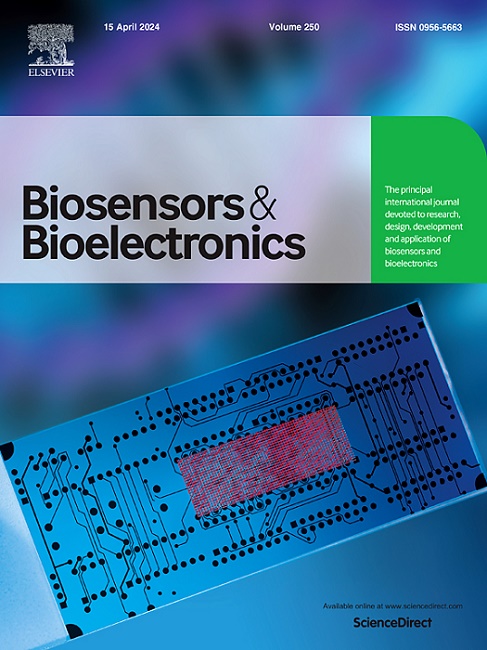Intelligent molecular cleavage and dual-signal relay amplification ratiometric strategy for high-sensitivity analysis and dynamic monitoring of exosomal RNA in glioma
IF 10.7
1区 生物学
Q1 BIOPHYSICS
引用次数: 0
Abstract
Exosomal RNA has emerged as a promising biomarker for glioblastoma (GBM) due to its exceptional stability in biofluids and strong correlation with tumor progression. In this study, we present an innovative intelligent molecular cleavage and dual-signal relay amplification-based ratiometric (ISR) strategy for high-sensitivity monitoring and dynamic analysis of exosomal RNA in glioma. The core mechanism is based on a hollow duplex structure that effectively prevents premature cleavage by duplex-specific nuclease (DSN), ensuring both the accuracy and stability of the detection system. Upon the introduction of the target microRNA (miRNA), one strand of the hollow duplex is displaced, forming a miRNA-DNA duplex that serves as a substrate for DSN, initiating target recycling and signal amplification. This dynamic process, coupled with dual-signal relay amplification, significantly enhances both sensitivity and stability, even at low miRNA concentrations. Our ratiometric approach substantially improves detection accuracy by comparing dual signal outputs. We further demonstrate the capability of real-time tracking of exosomal RNA dynamics, enabling precise monitoring of miRNA fluctuations over time. The practical applicability of our ISR strategy was validated by accurately detecting exosomal miRNA levels in clinical serum samples from glioblastoma patients, distinguishing them from healthy controls with high precision. Our method represents a significant advancement in early cancer detection and disease monitoring, with broad implications for precision medicine and the development of point-of-care diagnostic tools. Looking ahead, the ISR strategy holds great potential for monitoring a wide range of diseases, offering new opportunities for personalized diagnostics and therapeutic strategies.
求助全文
约1分钟内获得全文
求助全文
来源期刊

Biosensors and Bioelectronics
工程技术-电化学
CiteScore
20.80
自引率
7.10%
发文量
1006
审稿时长
29 days
期刊介绍:
Biosensors & Bioelectronics, along with its open access companion journal Biosensors & Bioelectronics: X, is the leading international publication in the field of biosensors and bioelectronics. It covers research, design, development, and application of biosensors, which are analytical devices incorporating biological materials with physicochemical transducers. These devices, including sensors, DNA chips, electronic noses, and lab-on-a-chip, produce digital signals proportional to specific analytes. Examples include immunosensors and enzyme-based biosensors, applied in various fields such as medicine, environmental monitoring, and food industry. The journal also focuses on molecular and supramolecular structures for enhancing device performance.
 求助内容:
求助内容: 应助结果提醒方式:
应助结果提醒方式:


